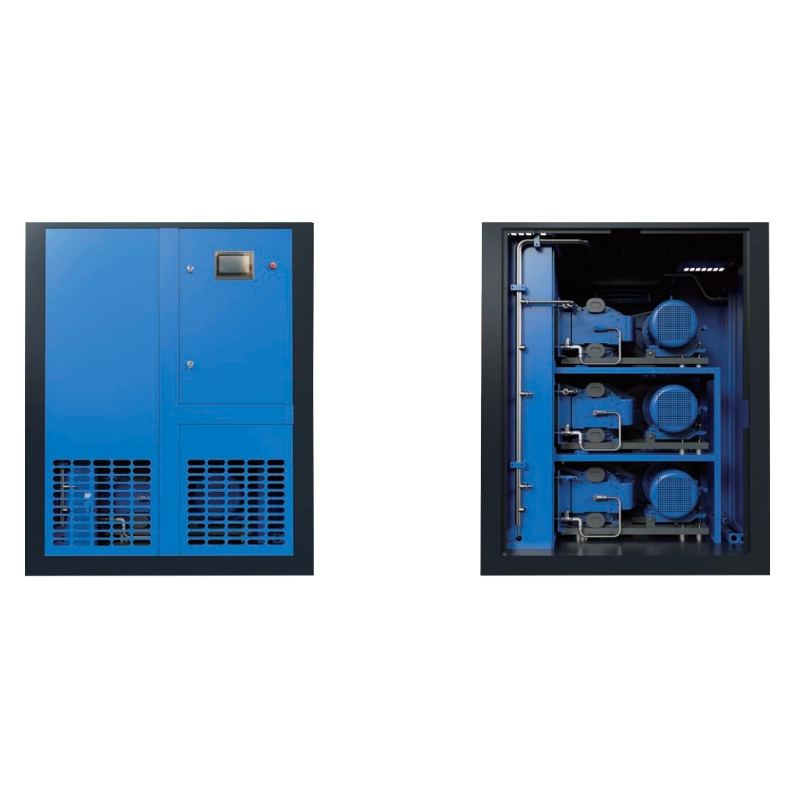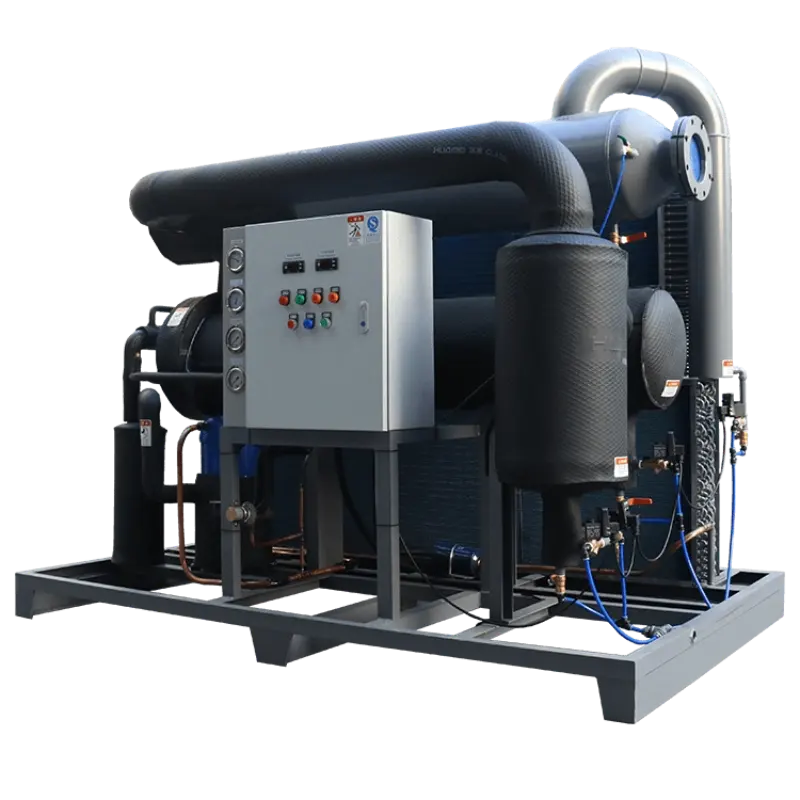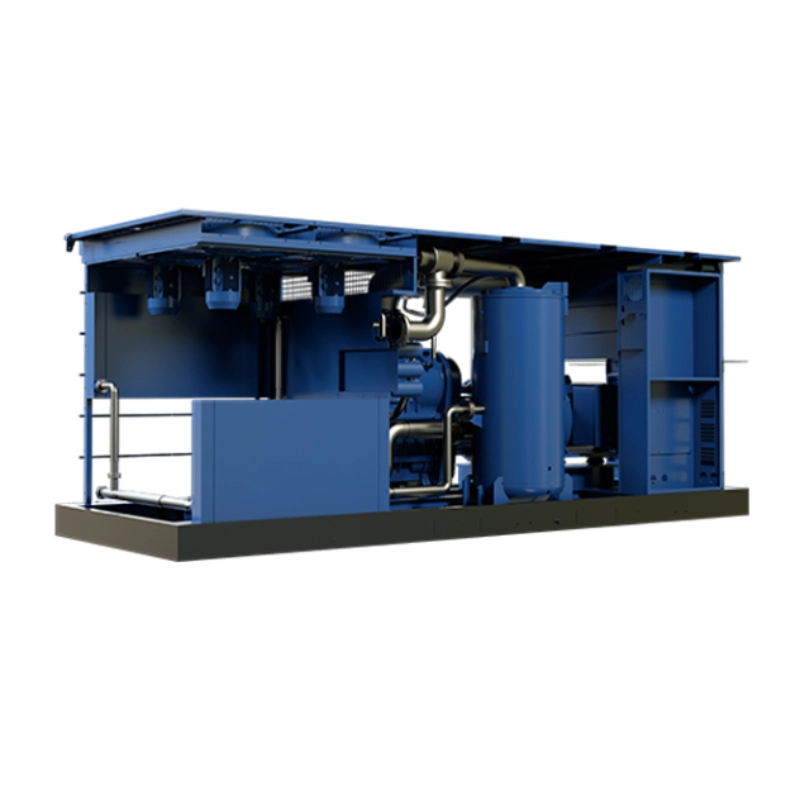How to Choose Energy-Efficient Air Compressor Equipment for Industrial Energy Management
Release time: 2025-08-15
In industrial operations, managing energy consumption is essential for lowering costs and boosting efficiency. One of the most energy-intensive pieces of equipment used across industries is the air compressor. These machines play a critical role in powering tools, machinery, and processes, but they can also drive up your energy bills if not selected or maintained correctly. This article will guide you through choosing energy-efficient air compressor equipment, helping you save both energy and money while supporting sustainable practices.
Why is Energy Efficiency Important for Air Compressors?
Air compressors are responsible for approximately 10% of the total energy use in industrial settings, according to the U.S. Department of Energy. These machines are often running continuously to meet the demands of pneumatic tools, machinery, and other equipment. When chosen and maintained improperly, they can consume large amounts of energy, resulting in significant operational costs.
Energy-efficient air compressors are designed to reduce electricity consumption by optimizing performance and minimizing waste. By selecting the right compressor for your needs, you can significantly cut down on energy usage, reduce operating costs, and improve your environmental impact.
Key Factors to Consider When Choosing Energy-Efficient Air Compressors
1. Understand Your Air Demand and Application Needs
Before investing in a new compressor, take time to evaluate your specific air demand and the requirements of your applications. Air compressors come in different sizes and capacities, and choosing the wrong one can lead to over-sizing or under-sizing, which can both be inefficient.
- Flow Rate (CFM): The compressor’s flow rate indicates how much air it can provide per minute. Make sure the flow rate meets your system’s needs, whether you’re running a single tool or operating machinery.
- Pressure Requirements (PSI): Understanding the necessary pressure levels ensures the compressor can meet your application’s demands.
- Duty Cycle: Consider how often the air compressor will be running. For high-demand operations that need continuous airflow, choose compressors designed for long-duty cycles.
Matching the compressor’s specifications with your application’s requirements ensures you get the most out of your machine, reducing energy waste.
2. Choose the Right Compressor Type for Efficiency
There are various types of air compressors, each designed for different industrial applications. Selecting the right compressor technology can significantly impact energy consumption.
- Rotary Screw Compressors: Ideal for applications requiring continuous airflow. These compressors are often used in manufacturing, automotive, and HVAC industries and are highly energy-efficient.
- Reciprocating Compressors: Best suited for smaller operations or those with intermittent air demand. While energy-efficient for short bursts, they tend to be less efficient in continuous operation.
- Centrifugal Compressors: Generally used for large-scale, high-flow operations. They are energy-efficient when handling large volumes of air, but less so when operating at lower capacities.
- Scroll Compressors: Perfect for low-volume, medium-pressure applications. These compressors are more compact and energy-efficient for smaller businesses.
Each compressor type has its advantages depending on your operational needs, so choosing the right one is essential for optimizing energy consumption.
3. Leverage Variable Speed Drives (VSD) for Efficiency
A Variable Speed Drive (VSD), or Variable Frequency Drive (VFD), is a critical feature for enhancing energy efficiency in air compressors. VSDs adjust the motor speed based on real-time demand, ensuring that the compressor operates at optimal energy levels instead of running at full capacity all the time.
Without a VSD, air compressors waste energy during periods of low demand by running at full speed. VSD compressors match their motor speed to air demand, helping to lower energy bills by reducing unnecessary energy use.
4. Look for Energy Star Certification and Efficiency Ratings
When searching for energy-efficient air compressors, look for models that carry the Energy Star certification. This certification is awarded to products that meet high standards of energy efficiency, helping you make an informed purchasing decision.
Additionally, check the specific power rating (kW/100 cfm), which indicates how much energy the compressor consumes relative to the air output. A lower rating indicates a more efficient compressor, meaning it consumes less energy per unit of compressed air.
5. Routine Maintenance and Energy Efficiency
Proper maintenance is key to ensuring your air compressor continues to perform efficiently over its lifetime. Regular servicing, such as checking for air leaks, changing filters, and maintaining the oil levels, can prevent inefficiencies from developing.
- Air Leaks: Small leaks in the air system can waste up to 30% of the compressed air. Regular leak checks and repairs can drastically improve compressor efficiency.
- Filters and Oil: Cleaning filters and maintaining oil levels ensure optimal compressor function, reducing energy consumption and extending the compressor’s lifespan.
Routine maintenance not only reduces energy waste but also prevents costly repairs and downtime.
6. Optimize Your Air System Design
The efficiency of your air distribution system plays a significant role in the overall energy consumption of your compressor. A poorly designed system with long pipes, excessive bends, or undersized piping can create pressure drops, forcing the compressor to work harder and use more energy.
Proper pipe sizing, reducing the number of bends, and ensuring that filters and regulators are placed strategically can reduce pressure loss and improve the overall energy efficiency of your compressed air system.
7. Calculate Life Cycle Costs (LCC)
When evaluating air compressors, it’s important to consider the Total Cost of Ownership (TCO). This includes the purchase price, installation costs, maintenance, energy usage, and repairs over the compressor’s lifespan.
Although energy-efficient air compressors may have a higher initial cost, their lower energy consumption and reduced maintenance needs will pay off over time. Use a life cycle cost analysis (LCC) tool to compare different compressors and determine which offers the best value over its operational life.
Maximize Efficiency and Savings with the Right Air Compressor
Choosing an energy-efficient air compressor is a critical decision for any industrial operation. By carefully assessing your air needs, selecting the right compressor type, incorporating variable speed drives, and maintaining the equipment properly, you can significantly reduce your facility’s energy consumption and operational costs.
Energy-efficient compressors lower your bills and contribute to environmental sustainability. When shopping for an air compressor, look for certifications, focus on the long-term cost savings, and ensure your system is well-maintained. With the right choice, you’ll achieve both efficiency and savings, helping your business thrive in today’s competitive and environmentally-conscious industrial landscape.



